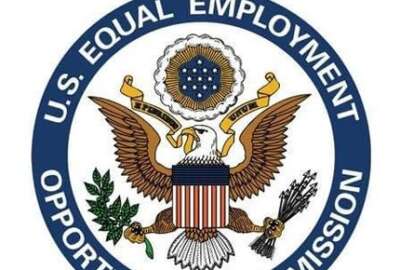
Equal Employment Opportunity Commission: 20-year-old legacy system modernization
The EEOC is modernizing its nearly 20-year-old Integrated Mission System (IMS), the primary tool used to carry out the agency’s mission.
An update on the project:
The EEOC is modernizing its nearly 20-year-old Integrated Mission System (IMS), the primary tool used to carry out the agency’s mission to prevent and remedy unlawful employment discrimination and advance equal opportunity in the workplace. Modernizing IMS will enhance and transform the way EEOC serves the public. IMS currently records information relating to private sector charges filed with the EEOC and 92 state and local Fair Employment Practices agencies (FEPAs) – in fiscal 2019, the EEOC received 72,675 private-sector charges. IMS is also used by EEOC program office personnel handling litigation and for federal sector complaints, hearings and appeals.
EEOC is approximately half-way into the first phase of this program, at the end of which they will deliver private sector charge applications to internal agency staff and their FEPA partners.
What has EEOC used the money from the TMF Board for?
EEOC is using the entirety of the TMF investment for contract resources, including:
- Project, scrum and technical leads,
- Analysts,
- Developers, and
- Test, release, documentation and accessibility specialists.
The agency is utilizing five existing blanket purchase agreement contract holders for these services, which were awarded prior to the TMF proposal.

How much faster has the TMF loan enabled EEOC to move with modernizing its projects?
Without the TMF funding, the EEOC typically adopted a round-robin approach to resource allocation, wherein they attempted to cycle through the technical needs of our multiple programs. In 2015, for example, the agency focused its new development efforts on its federal program. In 2016-2018, it focused on private sector programs, specifically the development of online constituent services. In 2019, the agency shifted some resources back to the federal program to further develop online services for agencies and their employees. Other mission programs, such as litigation and outreach, continued forward with limited technology investments.
Additionally, a dedicated funding source for this modernization effort has enabled EEOC to focus on replacing rather than “building around” its antiquated system.
Has EEOC paid back any portion of the loans?
They received their first installment of $2 million in January 2020. The agency is supplementing that amount with $750,000 annually ($1.5 million, in total) from its development, modernization and enhancement (DME) budget over a two-year development/deployment period. This approach enables the agency to focus a set of resources on modernizing its core charge/case management system while not “starving” other mission-related programs that also have goals and requirements.
Loan payback begins in fiscal 2021 and, should EEOC earn the second $2 million tranche, will conclude in fiscal 2026.
How is EEOC determining how much money it’s saving?
The payback model for this program relies on significant savings from three areas:
- Elimination of enterprise software licensing for the legacy system being modernized,
- A decrease in annual operations/maintenance contract expenses from the migration from a proprietary platform to open-source and cloud-based services, and
- Annual development/modernization savings that are the result of not requiring two discrete skillsets for the legacy and modernized systems.
The EEOC expects to achieve additional benefits from this modernization effort, including lower end-user support costs, reduced postage and records storage fees, and productivity gains for its investigative and adjudicative processes. These additional benefits have not yet been quantified or included in their savings assumptions.
How is EEOC sharing or plans to share its lessons learned from these TMF projects?
As part of their agreement with the TMF Board, EEOC will develop a formal playbook that includes configuration timeline, process documentation and metrics for conducting case management modernization and migrating from a recordation-based case management system to an event-driven case management system.
What advice would EEOC give to other agencies who are considering applying for a TMF loan?
From their perspective, the TMF’s process and board’s questions, input and follow-on activities were every bit as valuable as the funding. EEOC’s advice to other small agency chief information officers is to engage with the TMF, to at least learn more about the process.
Copyright © 2024 Federal News Network. All rights reserved. This website is not intended for users located within the European Economic Area.
Jason Miller is executive editor of Federal News Network and directs news coverage on the people, policy and programs of the federal government.
Follow @jmillerWFED
Related Stories




